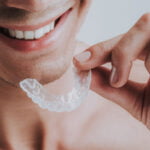Taking Out the Tongue Map
Sweet up front, salty on the sides, sour behind that, and bitter in the back; according to a diagram still used in schools and textbooks today, taste sensations are divided into certain sections of the tongue’s surface. Unfortunately, this common understanding of tongue anatomy is misleading.
Where Did It Go Wrong?
 Back in 1901, a German scientist named David P. Hänig measured the tongue’s responses to taste stimuli. He noted that certain areas of the tongue have greater sensitivity to different tastes. To explain his discovery, Hänig drew a line graph showing the change in stimuli between the different areas. In the 1940’s, Edwin Boring made his own “updated” version of the graph. Unfortunately, he simplified the data to show cordoned-off regions of the tongue, suggesting they responded to a single taste each. This diagram soon became the standard from elementary education to college, along with its misconceptions on how the tongue registers taste sensations.
Back in 1901, a German scientist named David P. Hänig measured the tongue’s responses to taste stimuli. He noted that certain areas of the tongue have greater sensitivity to different tastes. To explain his discovery, Hänig drew a line graph showing the change in stimuli between the different areas. In the 1940’s, Edwin Boring made his own “updated” version of the graph. Unfortunately, he simplified the data to show cordoned-off regions of the tongue, suggesting they responded to a single taste each. This diagram soon became the standard from elementary education to college, along with its misconceptions on how the tongue registers taste sensations.
Getting the Real Story About the Tongue
Many scientists have contested the basic tongue taste map over the years, mainly because research and experiments verify that all areas of the mouth with taste buds register all taste sensations. (Interestingly, the human mouth has taste buds not only on the tongue, but also on the roof of the mouth and even in the throat!) In line with Dr. Hänig’s findings, certain areas of the tongue are indeed more sensitive to specific taste sensations, but not exclusively so, as suggested in the Boring diagrams.
How the Tongue Works
There are two cranial nerves that process taste perception. The glossopharyngeal nerve works in the back, and the chorda tympani branch of the facial nerve takes care of the front. If the tongue was truly divided up into sections of single taste, any damage to one of those nerves would cut off the ability to register part of your taste sensation. In other words, if the “glosso” nerve was cut, you’d lose your ability to taste sweet things. However, experiments with anesthetizing either nerve resulted in no loss of taste sensation at all.
You can verify this with your own “tasty” experiment. Use the tip of your tongue to taste a salted snack. Does it register as sweet? Likely no, but instead salty, as expected. But that’s not where the tongue map says the tongue registers salty taste! Now put a piece of milk chocolate or another sweet treat in the back of your mouth. Let it rest there a moment to get the full taste. Does it taste bitter? We didn’t think so.
The Tongue and Oral Health
The tongue is not just a part of your mouth for tasting food. We use it to speak, to play musical instruments, to help us chew and swallow our food, and many other things. Sometimes we even dislodge pieces of food from our teeth with our tongue. A healthy tongue is a vital component for oral health, as is a good routine of oral hygiene. So, make sure to keep brushing your teeth, gums and tongue twice a day. That way you’re following the map to a healthy mouth!



0 Comments